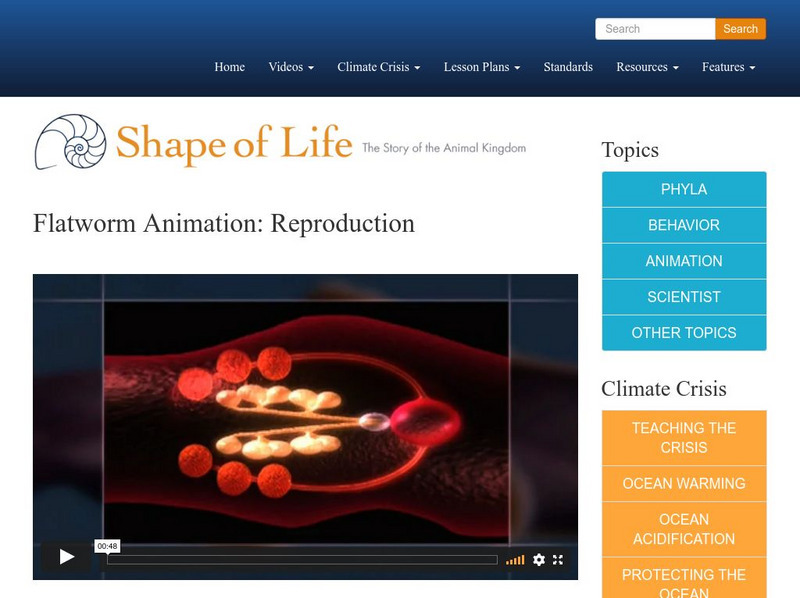Curated Video
Discovering the World of Sea Turtles
Sea turtles are ancient creatures that have witnessed the expansion and extinction of dinosaurs. They have evolved to adapt to aquatic life, with flippers, a flattened carapace, and lungs capable of filtering oxygen efficiently. These...
Weatherthings
Weather Things: Weather Cycles
The orbit of Earth on a tilted axis around the sun leads to the seasons. The resulting change of angle of the sun, and length of day controls how warm we get at different times of the year. With those changes in seasons come changes in...
Next Animation Studio
Arctic ocean acidification threatens fish lifecycle and livelihood of arctic environment.
The Arctic ecosystem, already under pressure from record ice melts, faces another potential threat in the form of rapid acidification of the ocean, according to an international study published on Monday. Acidification, blamed on the...
SciShow
Why Don’t Jellyfish Look Like That?
When you think of a jellyfish, do you imagine an angelic stingy blob? That's just one stage of the life of a jelly!
Nature League
Does the Full Moon Affect Animal Behavior? - From A to B
This week on Nature League, Adrian asks Brit if a full moon has any measurable effect on humans and non-human animals.
Weatherthings
Weather Things: Causes of Seasons:
The orbit of Earth on a tilted axis around the sun leads to the seasons. The resulting change of angle of the sun, and length of day controls how warm we get at different times of the year. With those changes in seasons come changes in...
Weatherthings
Weather Things: Autumn
The orbit of Earth on a tilted axis around the sun leads to the seasons. The resulting change of angle of the sun, and length of day controls how warm we get at different times of the year. With those changes in seasons come changes in...
Weatherthings
Weather Things: Seasonal Changes
The orbit of Earth on a tilted axis around the sun leads to the seasons. The resulting change of angle of the sun, and length of day controls how warm we get at different times of the year. With those changes in seasons come changes in...
Weatherthings
Weather Things: Spring
The orbit of Earth on a tilted axis around the sun leads to the seasons. The resulting change of angle of the sun, and length of day controls how warm we get at different times of the year. With those changes in seasons come changes in...
Weatherthings
Weather Things: Winter
The orbit of Earth on a tilted axis around the sun leads to the seasons. The resulting change of angle of the sun, and length of day controls how warm we get at different times of the year. With those changes in seasons come changes in...
Curated Video
What Is The Rock Cycle? | Environmental Chemistry | Chemistry | FuseSchool
In this video you will learn about the dynamic rock cycle. Plant roots help to create new soil from the solid rock and they get nutrients and support from the soil. This solid rock is often sandstone or granite. They are made up of...
NASA
NASA | The Ocean: A Driving Force for Weather and Climate
The Ocean is essential to life on Earth. Most of Earth's water is stored in the ocean. Although 40 percent of Earth's population lives within, or near coastal regions- the ocean impacts people everywhere. Without the ocean, our planet...
SciShow
This Beautiful House Is Made of Snot
These giant balls of mucus may seem like a bizarre sight in the open ocean, but all this snot serves a purpose, both for the tiny creatures that produce it and for the entire ocean ecosystem!
Deep Look
Sea Urchins Pull Themselves Inside Out To Be Reborn
Sea Urchins live for centuries if they can make it to adulthood. The video highlights the challenges of sea urchins making the journey through the open sea for years. When they finally find a place to land, an amazing transformation occurs.
TED-Ed
The Survival of the Sea Turtle
Sea turtles face a lot of adversity: storms, predators on land and in the sea, and eggs that don't hatch, but the biggest threat to these magnificent and ancient creatures is human activity. From poaching to pollution, from trash to...
Deep Look
Nature's Scuba Divers: How Beetles Breathe Underwater
Some insects breathe air yet live underwater. The video explains how they carry air with them and the scientific principles behind this ability. It focuses on beetles and surface tension as the concept of nature's scuba divers becomes...
PBS
Pbs Learning Media: Dinosaur Train: The Kids Learn About Archelons
In this Dinosaur Train clip Gilbert teaches the kids about the giant prehistoric sea turtle called Archelon. Gilbert reminds the kids that different species behave differently and have unique life cycles. Take this video as an...
Sea Studios Foundation
Shape of Life: Flatworm Animation: Reproduction
Flatworms are hermaphroditic with both male and female reproductive organs. They also have internal fertilization. See Penis Fencing (Behavior Sequences) to learn how the sperm gets delivered. [0:48]






